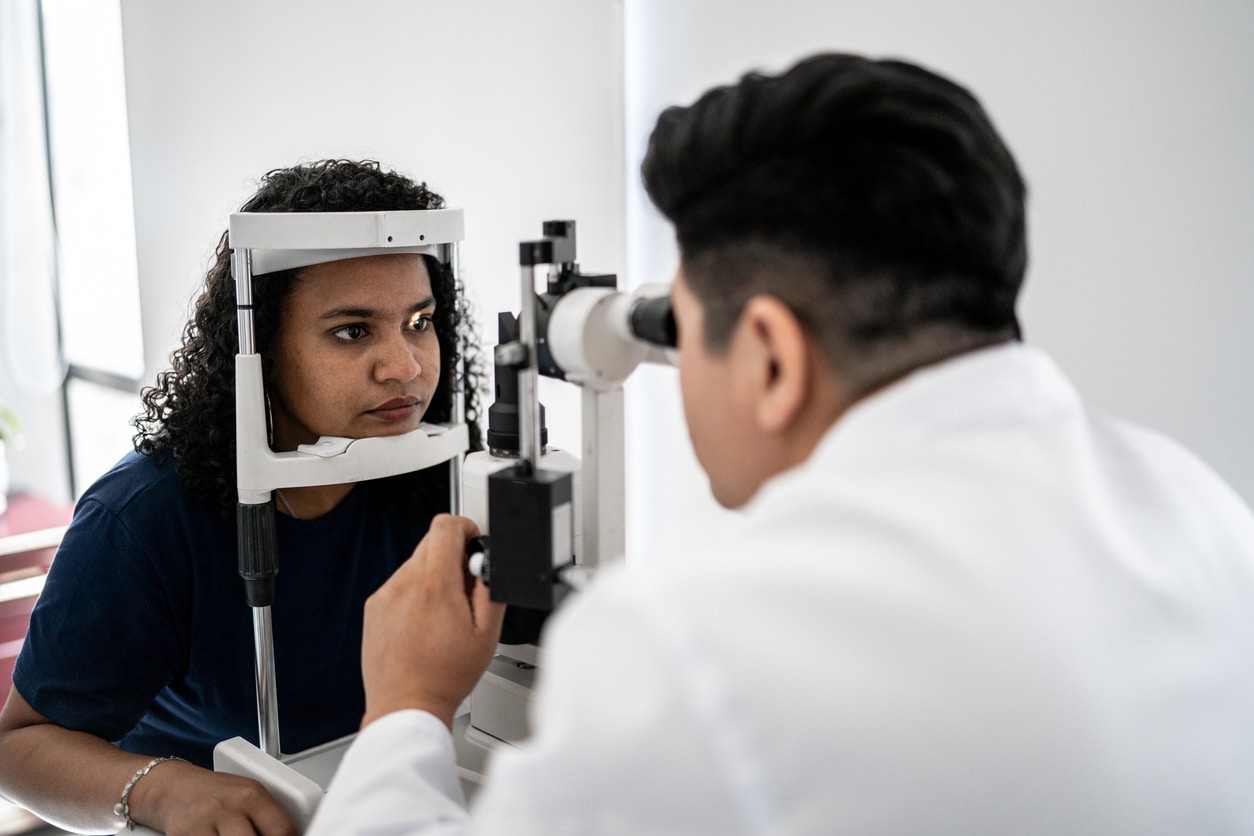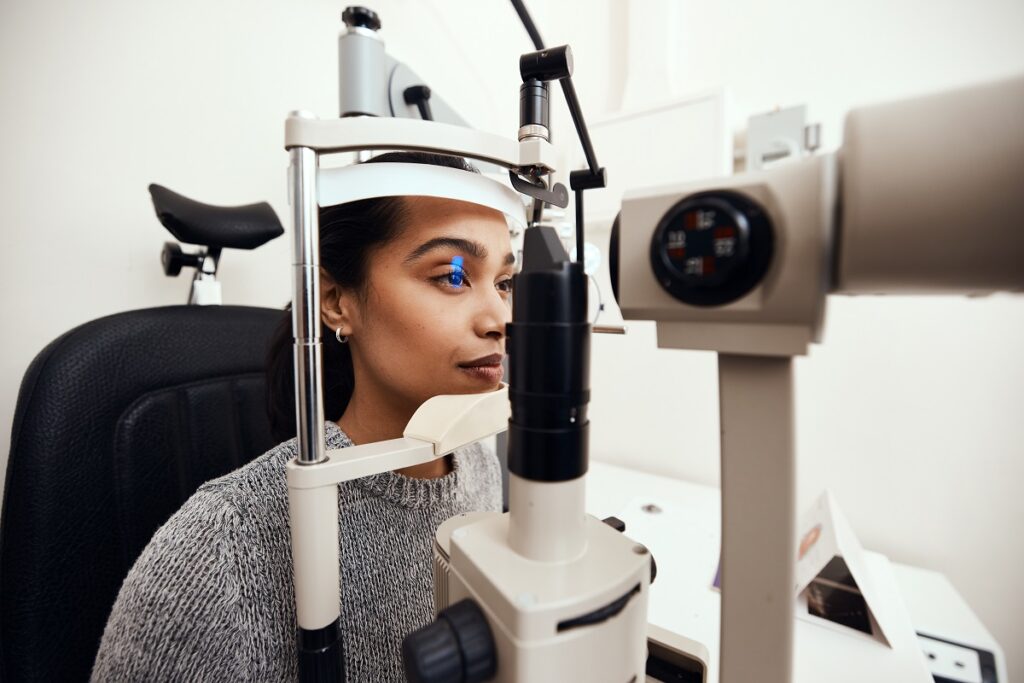Trustworthy Opticore Optometry: Elevating Your Eye Health Experience
The Comprehensive Eye Exam: What to Anticipate During Your Visit to the Eye Physician
A visit to the eye physician for a thorough eye exam is more than a routine examination; it is an essential action in securing your aesthetic health and wellness. From the preliminary discussion of your case history to the precision of the visual acuity test, each component of the examination offers a details objective. But what exactly occurs during the eye health assessment, and how does it influence the prescription process? Comprehending these components is vital for those that wish to maintain optimum eyesight. As we explore each element, the importance of follow-up recommendations will certainly additionally come to be clear.
Initial Assessment
The initial consultation throughout an eye exam offers as a vital foundation for understanding an individual's visual health demands. This stage establishes the tone for the whole examination procedure, enabling the eye doctor to gather essential details regarding the person's case history, way of living, and particular vision problems. By carefully examining any kind of pre-existing conditions, drugs, or previous surgical treatments, the eye care professional can tailor the assessment to address private demands efficiently.

Furthermore, the initial assessment is a possibility for clients to articulate any type of problems or inquiries, cultivating a collective connection with their doctor. This interaction not only guarantees that the person really feels educated and comfy however additionally equips them to take part actively in their eye wellness monitoring. Jointly, these discussions enable the eye doctor to develop an individualized assessment strategy, guaranteeing optimum care and accurate diagnosis.
Aesthetic Acuity Examination
Beginning the core components of an eye exam, the visual skill examination is created to evaluate the intensity and clarity of a client's vision. This essential analysis helps figure out just how well an individual can discern letters or signs at a standard range, normally using a Snellen graph (Eye Doctor Optometrist). The graph makes up rows of letters that reduce in size from top to base, with the client positioned at a customary range of 20 feet
Throughout the examination, the person is asked to cover one eye and read aloud the tiniest line of letters they can see clearly. This procedure is duplicated for the various other eye. The outcomes are videotaped as a portion, with 20/20 vision showing normal visual skill-- where the individual can see at 20 feet what an individual with regular vision can see at that distance.
The aesthetic acuity test also identifies potential refractive errors such as astigmatism, myopia, or hyperopia, which might necessitate restorative lenses. By establishing a baseline of visual efficiency, the examination is a crucial diagnostic tool that aids the eye care specialist in establishing an appropriate treatment plan tailored to the individual's unique aesthetic demands.
Eye Wellness Analysis
Complying with the aesthetic skill examination, an extensive eye health and wellness assessment is carried out to make certain the total wellness of the eyes. This essential section of the eye test involves a detailed assessment of both the external and interior structures of the eye. The eye doctor or eye doctor starts by taking a look at the eyelids, cornea, conjunctiva, and sclera for any kind of indicators of infection, inflammation, or irregularities. Using specialized devices like a slit lamp, the specialist obtains a multiplied sight of the eye's anatomy, allowing thorough assessment.
Via the use of ophthalmoscopy or fundus photography, the retina, optic nerve, and blood vessels are meticulously assessed. In numerous situations, student expansion is done to boost presence of the interior eye structures, although this may result in short-term light level of sensitivity for the client.
Additionally, intraocular stress is measured to screen for glaucoma danger. This is generally done making use of tonometry, which can find raised pressure levels that may suggest prospective damages to the optic nerve. Jointly, these assessments develop a thorough analysis to keep eye health.
Refraction and Prescription
Just how does one make certain optimal vision? A critical step exists in the process of refraction and getting a precise prescription. Refraction is a sophisticated procedure performed by eye care professionals to determine the specific lens power needed to deal with refractive mistakes such as nearsightedness, hyperopia, astigmatism, and presbyopia. The objective of this procedure is to analyze just how light bends as it passes with the eye, permitting the professional to figure out whether restorative lenses are needed for improved aesthetic skill.
During the refraction process, the person is asked to check out a phoropter, a gadget that has different lenses. The practitioner will systematically transform these lenses and ask the client to contrast clearness in between alternatives till the ideal feasible vision is attained. This Get More Info treatment is vital in crafting an accurate prescription that defines the proper lens power for eyeglasses or call lenses.
The prescription stemmed from this treatment not just enhances vision however also offers as a structure for selecting suitable restorative eyewear. It is necessary to ensure that prescriptions are regularly upgraded, as modifications in vision can occur with time, stressing the relevance of routine eye assessments. This meticulous focus to information helps preserve clear, comfy vision in daily life.
Follow-Up Referrals

Throughout a follow-up check out, the eye physician will certainly perform a collection of examinations to assess aesthetic skill and look for any type of changes in vision that may require an upgrade to the prescription. Furthermore, the follow-up provides an opportunity to review any type of discomfort or problems experienced with existing glasses. Changes can be made to make sure comfort and efficiency, whether via lens modification or frame adjustments.
For individuals with recurring conditions such as glaucoma, diabetes-related eye concerns, or macular degeneration, more regular follow-ups might be essential. These consultations are important for taking care of and potentially reducing the progression of Eye Doctor Optometrist eye illness. Abiding by these recommendations can considerably add to preserving visual health and avoiding long-term difficulties.
Final Thought
The detailed eye examination is an essential process for preserving aesthetic health, incorporating an in-depth assessment of clinical history and vision concerns. Secret parts consist of the aesthetic skill test, which evaluates vision clearness, and the eye health and wellness analysis, which examines the general problem of the eyes.
A see to the eye doctor for an extensive eye examination is even more than a regular check-up; it is a crucial step in safeguarding your aesthetic health and wellness.Kicking off the core elements of an eye evaluation, the visual acuity test is designed to assess the go to my blog sharpness and quality of a person's vision.Complying with the visual skill test, an extensive eye health and wellness evaluation is performed to make certain the total wellness of the eyes. These check outs enable the eye care specialist to check adjustments in vision, update prescriptions, and evaluate the overall health and wellness of the eyes. Trick elements consist of the aesthetic skill test, which assesses eyesight clearness, and the eye wellness evaluation, which analyzes the general problem of the eyes.